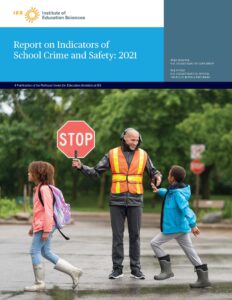Several states have or are in process of passing laws requiring schools to implement emergency alert systems. Alyssa’s Law, for example, has now become law in several states, with varying degrees of accountability. The law calls for schools to install silent panic alarms linked directly to law enforcement, and was most recently enacted in New York.
Your school or district likely has some written plan for emergencies – 96% of U.S. schools reported having them for the 2020-21 school year, according to the July 2022 Report on Indicators of School Crime and Safety: 2021 (PDF download).
But does that plan provide the best safety and security for students and staff? Most principals and school leaders say they’d like tools that allow for quicker and more effective communication in the threat of emergency. Funding and implementation are often hindrances, however.
The SchoolSafety.gov website not only offers a plethora of resources and tools, such as a Safety Readiness Assessment quiz, but also provides schools with a Grants Finder Tool.
A number of grants are available through the U.S. departments of Education, Homeland Security, Justice and Health & Human Services, as well as through states and local communities.
It only takes a few minutes to complete a brief quiz that yields lists of potential grants. Some may take some time to apply for but could result in better overall safety tools for schools or school districts.
In addition, a State Search Tool allows users to search for resources and tools in a particular state that can be used to put together a comprehensive safety plan.
5 Things an Emergency Alert System Should Have
Funding aside, searching for the right emergency alert system for your school or district should take the following questions into account:
- Can it be activated quickly to instantly alert all affected people as well as law enforcement?
- Does it provide templated (and quick) emergency responses, as well as the ability to customize them?
- Is the platform universal enough to effectively communicate via text and/or email across devices?
- Does it facilitate rapid accounting of all staff, employees and students?
- Is the accounting and check-in process silent?
Who is Alyssa, and What is Alyssa's Law?
Alyssa Alhadeff was a 14-year-old student at Marjory Stoneman Douglas High School in Parkland, Fla., who was one of 17 gunned down in 2018. Her parents, Lori and Ilan Alhadeff, have made it their mission to make schools safer in honor of their daughter and her slain classmates.
Alyssa’s Law is legislation addressing the issue of law enforcement response time in the case of life-threatening emergencies. The law calls for the installation of silent panic alarms linked directly to law enforcement.
Several states have passed or are in the process of passing versions of the law, including Florida, where Alyssa died.
Resources
SchoolSafety.gov: This website includes tools and resources for schools and districts, including sources of funding, safety assessments and state-based resources.
MakeOurSchoolsSafe.org: Make Our Schools Safe is a 501(c)(3) national nonprofit organization dedicated to protecting students and teachers at school. It was founded by the parents of Alyssa Alhadeff, a 14-year-old killed in the Marjory Stoneman Douglas High School shooting in 2018 in Parkland, Fla., and is a good resource on Alyssa’s Law.
National Center for School Safety: The center is based at the University of Michigan School of Public Health. It leads training, lends technical assistance and includes resources to address school safety challenges.
The Students, Teachers, Officers Preventing (STOP) School Violence Grant Program: The STOP School Violence Act of 2018 gave the Department of Justice the authority to provide awards to implement evidence-based school safety programs and technology. There are a number of grants available, although most deadlines have passed for the 2022-2023 school year. However, this is a good resource to have for ongoing grant opportunities.
Grant Finder Tool: This tool helps you find applicable funding opportunities, including a variety of federally available school safety-specific grants. The tool is updated on an ongoing basis to reflect new opportunities.
State Search Tool: This tool allows the user to search for resources in a particular state, and is a place to submit additional resources.



